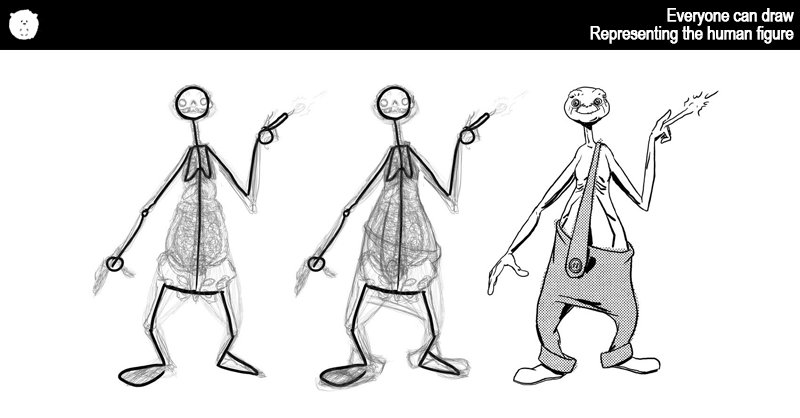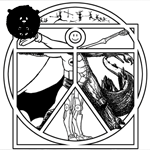Everyone Can Draw, A conversation about the human figure with the aim of creating an experience that proves that anyone is capable of drawing.

It’s very common to hear from people “I can’t even draw a stick figure”, and that’s exactly where we’re going to start. Draw a stick figure on a sheet or notebook. Don’t worry, your design is not being judged, there is no right or wrong. Regardless of what your drawing looked like, or if you made the legs longer, the neck longer, or you put cowboy boots and an eye patch on your doll, you probably represented a figure with a head, torso, two arms, and two legs.

What you have just done is one of the most magical resources of a human being. The ability to visually represent yourself through almost abstract shapes and strokes. No wonder, the beginning of graphic representation is mixed with the beginning of the history of human civilization. And no wonder, some of the first drawings found on cave walls are representations of human figures.

As humans, we walk on two legs, with our head above our shoulders. We have a posture and way of locomotion unique in the animal kingdom. That said, the shape of the human silhouette becomes a good way to identify ourselves. The human silhouette is something instinctively registered in our brain, which constantly seeks to identify this shape, through our vision.

And that’s what your doll was successful in accomplishing: representing a human being. Anyone on the planet, regardless of language or culture, thanks to instinct, will identify your design as a human being. And that’s why we use stick figures to this day. On road signs and bathroom doors for example.

As we talk, you can continue drawing. Create more stick figures, try doodling more, without putting too much pressure on the pencil. Remember, your design is not being judged. Let’s start by experimenting with the stick figure.

If we consider that stick figures are a representation of the basic structure of the human form, we can say that it is also a representation of our skeleton.

For our exercise, let’s take the elements of our stick figure and approximate it to the shape and proportion of the human skeleton. Here we notice that in our first doll we didn’t worry about the width of the shoulder or the pelvis, with the rib cage, the joints, feet and hands.

Adding these structural details enhances this instinctive sense of recognition and helps us to attribute human characteristics to the design. That said, we can experiment with shapes and proportions.

These stick figures can be used as a structural starting point to create any kind of human figure representation.

If we think that the stick figure serves as the skeleton of the drawing, we can also imagine that our character has more things inside him than just bones.

So let’s fill in our structure. You can scribble, imagine where the muscles, organs, fat bags and clothes would be. Let’s “stuff” our skeleton from the inside out.

Even if your character is not realistic, we can still think about his volume and consistency. Maybe it’s soft like jelly, or elastic like rubber.

The closer to human proportions and human anatomy, the greater the sense of realism.

But even working with minimalist, exaggerated or two-dimensional shapes, the structure of the stick figure is still the basis.

Now it’s time to experiment. Create stick figures playing with proportions, try to scribble freely, without the clear objective of drawing this or that character. Let characters emerge naturally and find them in your doodles.


